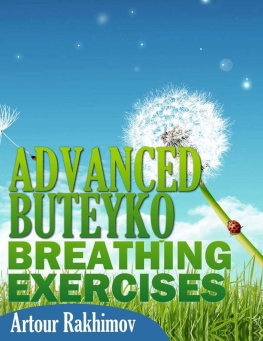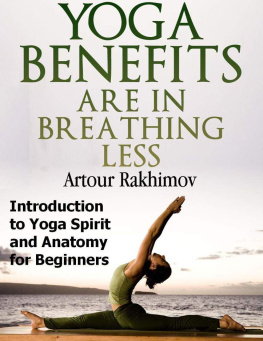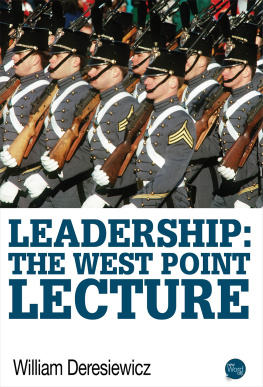Dr. Buteyko Lecture at Moscow State University in 1969
by Dr. Artour Rakhimov
Table of Contents
Copyrights
Translation: Dr. Artour Rakhimov 2008-2018
This book is copyrighted.
It is prohibited to copy, lend, adapt, electronically transmit, or transmit by any other means or methods without prior written approval from the author. However, the book may be borrowed by family members.
Disclaimer
The content provided herein is for information purposes only and not intended to diagnose, treat, cure or prevent cystic fibrosis or any other chronic disease. Always consult your doctor or health care provider before making any medical decisions. The information herein is the sole opinion of Dr. Artour Rakhimov and does not constitute medical advice. These statements have not been evaluated by Ontario Ministry of Health. Although every effort has been made to ensure the accuracy of the information herein, Dr. Artour Rakhimov accepts no responsibility or liability and makes no claims, promises, or guarantees regarding the accuracy, completeness, or adequacy of the information provided herein and expressly disclaims any liability for errors and omissions herein.
Introduction
CO2 theory and a new method of treatment and prevention of diseases of the respiratory, cardiovascular, and nervous systems and some other conditions
Lecture by Konstantin Pavlovich Buteyko, M.D., Ph.D. (Medical Sciences)
9 December 1969, Moscow.
* Comments: Footnotes include Dr. Artour Rakhimovs comments throughout the whole lecture. Words in square brackets ([example]) are used to add missing words. Words in parentheses or "round brackets" are given to translate some Russian words or names or to clarify the ideas expressed by Doctor Buteyko.
Editorial introduction
I cannot refrain from mentioning K. P. Buteykos recommendations of Breathe less; train breath holding. I accept his ideas that modern man is over-trained about deep breathing; that this reduces CO2 concentrations in the blood and causes various spasms of the bronchi, coronary artery, and intestines. His ideas make sense. The test he suggests, which also deserves attention, is as follows: hold your breath after usual exhalation for as long as you can, watching the second hand of a clock. If one holds for less than 20 seconds, this is a poor result; from 20 to 40 seconds is satisfactory; from 40 to 60 seconds is good, and more than 60 seconds excellent.
The host speaks:
Your attention please, dear comrades! A lecture will be held in the Communist auditorium of the Moscow State University. Today, the 9th of December 1969, Doctor of Medical Sciences Dr. Konstantin Pavlovich Buteyko is going to give a lecture titled Discovery of diseases of deep breathing, as the main cause of allergies, sclerosis, psychosis, drug addiction, fraud, criminality, and other symptoms of disease and death of Western civilization.
The organizer continues to speak: This fundamentally new theory of breathing and the treatment and prevention of many serious diseases was developed in Academgorodok [Novosibirsk's Scientific Centre] in the Laboratory of Functional Diagnostics led by K. P. Buteyko. Practical applications of the method of the voluntary elimination of deep breathing [the Buteyko method] during the last ten years have produced results that are unbelievable in the history of medicine.
Editorial comment: He [Dr. Buteyko] enters the auditorium and approaches the podium. He is a tall man with slightly greying hair, and free smooth movements. One can feel that he has a lot of energy, and his large facial features appear unusually calm. Possibly, this occurs when people are confident of the truth.
Buteykos truth is the original discovery of a way to health for hundreds of millions of people. It is a path from incurable diseases to the super-endurance of yogis.
Dr. Buteyko starts speaking
It is with great pleasure that I am lecturing at Moscow State University where I studied medicine and related sciences in 1946. It is very difficult to speak with such a group that does not have the same scientific background or occupation. It is easier to speak with doctors, physicists, or chemical scientists. Our problem here will be presented in general for all to understand regardless of their occupation. Therefore, I will not be able to elucidate this complex topic in detail. I will only present the
main points, and perhaps later, according to the questions asked, which I would request you send up front in written form, I will try to explain more clearly for those who did not quite understand all the information.
Therefore I will explain, in general terms, all the main relationships that were found in our investigations, and their perspectives, and only in general terms will I touch upon the theoretical part, which would be unknown to the layman. I will also describe the practical part of the business, which can be used by doctors or professionals. But most important, we believe, is to provide educated people with our idea and theory. Most likely it will be clearer to you later. We try to disseminate our theory amongst the general population and believe that knowledge of this theory alone can be a very important prophylactic factor in the struggle with most common health conditions.
Today we will not focus on details that relate to the technical part or methodological (or instrumental) part of our research, methods of data analysis, etc. This can be interesting as well. Scientific and popular magazines have written about this a lot. Therefore, the curious can find this information in corresponding magazines and issues.
It is also difficult to list all the scientific papers published during this project: there are more than 40, including 5 approved doctoral [Ph.D.] dissertations. Therefore, if there are people in the medical field, they can find these scientific publications and read them at the Central Library named after V. I. Lenin, searching for my name or the names of my colleagues. For the layman I can suggest the magazine Izobretatel i Ratsionalizator (Inventor and Optimizer) , issue 5 for 1962, where all methodological questions and questions related specifically to our theory are briefly elucidated. It is seven years old now, as you can see.
Then there was a popular article in Literaturnaya Gazeta ( Literary Newspaper ) , Breathe Deeper! Should We?. Sovetskaya Rossiya (Soviet Russia) on January 14, 1968, which had an article that was Defending Doctor Buteyko; Selskaya Molodezsh (Countrys Young People) has now made a step to explain our theory. Additional information can be found in these popular articles, and scientific information, I repeat, in scientific publications, which can be found in bibliographic reference books.
Now, very briefly, I will explain the search itself, because it is only in the universities that questions of systematic scientific exploration and sources of new emerging thoughts and ideas are investigated. We frequently explain all this to people who study philosophy, common problems of sciences, biology, and physiology. These professionals are interested in knowing about thoughts and ideas which run contradictory to the main dogmas now present in medicine.
I must warn you in advance not to be surprised or indignant about anything. Therefore please submit your questions at the end of the lecture since much will be clarified during the lecture.
Can everybody hear me? Otherwise, it would be very disappointing to be told only at the end of the lecture that the microphone was working poorly. However, it is possible to go on without microphones if they get in the way.
The main conclusion, which should become evident by the end, is the necessity to radically reconstruct the main prophylactic treatment, and methods of prevention and treatment, of the most common diseases of man, which concern damage of the nervous system, lungs, blood vessels, and metabolism. All these conditions should be treated using a method contrary to what has been used before. These results may be interesting to you. I will also touch upon questions concerning the clarity of intellectual work and our ability to increase our mental capacities, to improve memory, orientation, and sleep. Judging by the scope of these questions, it is obvious that the subject is too broad to be fully considered within the current two hours.






